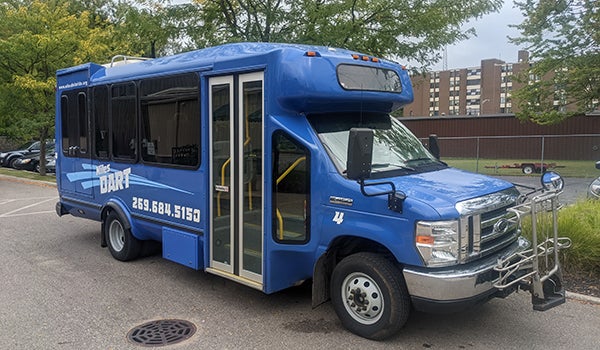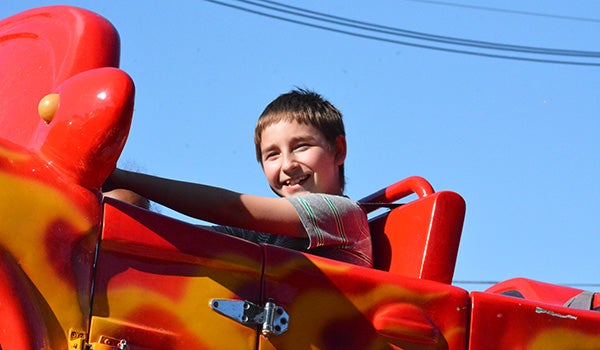Dailey Church celebrates 125 years
Published 5:45 pm Thursday, September 1, 2011
Independent Dailey Church, which gospel singer Mahalia Jackson helped grow in 1956 after it survived an April 29, 1945, fire, celebrated its 125th anniversary Saturday, Aug. 27, and Sunday, Aug. 28.
Saturday there will be fellowship with friends and original recipe ice cream from 6 to 8 p.m., followed by music and a worship service from 8 until 9.
Sunday morning at 9:30 there will be a worship service at the former Union Protestant Church.
The original church on the northwest corner of Dailey Road and Dunning Street in LaGrange Township, which had been expanded on the west side in the 1930s, burned in 1945 during a Sunday worship service.
The present church was dedicated in 1948, with an addition put on in 1956 and damaged when a speeding vehicle rammed into it 30 years ago in 1981.
The Rev. Mark Filonczuk, who arrived July 15, 1985, was pastor during the centennial of June 22, 1986.
Other former pastors include the Rev. Bradley Heiple (Feb. 8, 1981-July 1, 1985), the Rev. Lowell Gerber (Feb. 1, 1978-Feb. 1, 1981) and the Rev. Douglas Ohime (Feb. 1, 1976-June 24, 1977).
Current pastor the Rev. Dr. David Waid first appears on the roster of ministers who have served since the fire from 1970 to 1973.
The church organized in 1886 as non-denominational, despite efforts to make it a Methodist church.
The first board of trustees elected in May 1887 consisted of Thomas Higgins, William Condon, William H. Hain, Emmett Dunning and Charles Kimmerle.
Trustees signing articles of incorporation were Bina Wiley, Mary E. Spaulding, Titus Tietsort, Horace Cooper, Mary Hass, J.N. Webster, Edward Anthony, John Tompson, William Cady, John Hain, Emily Hain, Mary J. Kimmerle, H. Collins, George B. Crawford, Mary A. Hain and Ella M. Kimmerle
Dailey Church stayed unaffiliated until joining the United Church of Christ in 1963.
The initial frame building was put up during the summer of 1886 across from Union Cemetery for $1,600 on land given by Henry Kimmerle.
Seating and the pulpit were made at Jones Mill, a furniture factory north of Cassopolis.
After the fire, the congregation met at Salisbury School until the familiar brick, stone and masonry structure was placed on the same foundation at a cost of $16,000.
The two-story addition of 1956 added a nursery, sanctuary overflow, a choir room, a pastor’s study and a parsonage.
A concert at Cassopolis High School by gospel singer Mahalia Jackson contributed to the fundraising effort.
Part-time pastors and theology students led the congregation until Nov. 24, 1963, when the Rev. William H. Schobert was called as the first full-time pastor.
In 1986, the church had about 80 members, led by elders Devon Truex, Harold Maxwell and Carl Brewster and Trustees Thelma Maxwell, Woodrow Moore, James Mesko, Bart Huron, Betty Anderson and Paul Albert.
According to a Christmas Eve 1995 reminiscence by Katherine Kimmerle Follett, the “beautiful little church” early on was simply known as Kimmerle Church.
The Christmas tree, topped by a golden star, was festooned with ropes of cranberries and popcorn, with “many small candles burning brightly at the end of each branch. What a wonder there were not more fires in churches in those days, especially at Christmastime.”
Children’s gifts included dolls, books and hair ribbons for girls and whistles, jackknives or tops for boys, and an orange for each child. “A great luxury in those days,” according to Follett, a genealogist from Cassopolis who by then lived in Goshen, Ind.
“I also remember the wonderful dinners we had at that church and how my cousin Isabel Hain Hartranft always brought her big wooden hand-crank freezer full of homemade ice cream.”
Kimmerle Church had been so called because of the donation by her great-grandfather, Henry. Union Cemetery came about when her great-great-great-grandfather, John Pettigrew, a Revolutionary War soldier, died in 1838 and a burial place was needed.
Son-in-law Joseph McPherson provided it. When McPherson moved to Indiana, he deeded the land to the LaGrange Township Board of Health.
In the early days, most people buried in what has also been known as Brookside Cemetery were related to Follett.
Her father was born in the first house to the east in 1884.
When he was young, the brook was larger and he told of catching trout.
Dailey received its name from the last name of the first railroad section boss. It came into existence about 1850.
There had been a number of preachers of different denominations who conducted religious services in one or another of the schoolhouses about the village.
As early as 1851, the Christian Church of Christ organized a branch of that body in the Mechanicsburg schoolhouse, but no permanent organization of a church occurred.
In the winter of 1885-1886, the Rev. Isaiah Wilson, pastor of the Methodist Church in Pokagon, held a series of meetings in a Dailey hall owned by Levi Vail.
Seven houses built by Vail, a store keeper as well as a carpenter, were still standing in the mid-1980s.
The Rev. Wilson’s meetings developed enough religious interest that the community felt a church building was needed. He wanted it put in Dailey organized as a Methodist church.
However, a considerable element of residents thought it should be erected on a plot across from Union Cemetery as a non-denominational church.
Unable to resolve the dispute, each group set about preparing to erect a building on the site of its choice early in 1886.
Early in the summer of 1886, plans were bought from Philadelphia church architect Benjamin D. Price.
A contract was issued to George Rivers, a Cassopolis contractor and carpenter, for his low bid, $1,600.
Excavation had previously been made. The foundation was “laid up,” largely by volunteer labor directed by Orrin A. Dever and Jack Brennan. The only paid help was one stonemason. It was unusual to see a rural church with a full basement and furnace at that time.
According to the Cassopolis Vigilant, “It was one of the most beautiful country church buildings anywhere and, with its beautiful setting, was admired by all who saw it.”
Articles of incorporation were adopted May 28, 1886, and filed with the county clerk June 3, 1886.







